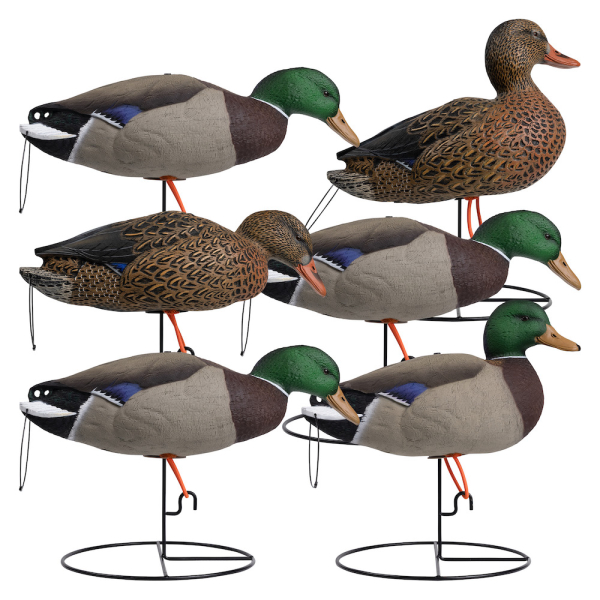Decoy Dogs for Coyote Control
By Glen Wunderlich
Duck hunters, goose hunters, and turkey hunters know it: decoys can tip the odds in their favor. Pages of options in any hunting gear catalog bears out the fact that hunters use decoys in a big way. And, with crow and coyote season running concurrently for the next two months, it’s a good time to test decoying theories.
Decoys can add a sense of realism to any calling sequence by imitating peace and tranquility, as is done with various turkey decoying tactics. They can provide an “all-clear” signal to otherwise reluctant game that it is safe to venture from cover’s security.
When it comes to crow hunting, however, the serenity of a spread set out on the ground to imitate feeding crows, has never worked for me. Although it may be possible to get a few shots in, crows aren’t going to be curious enough to hang around a bunch of statues stuck in the ground when the shooting starts.
With a shift in thinking, decoys can also be used in conjunction with proper calling sounds to create chaos. Since all varmints are vulnerable to a certain extent to challenges within their territory, making them fighting mad can cause them to lose their guard.
Crow in distress calls, for example, can illicit Kamikaze-type responses by comrades rushing in to harass an attacker such as an owl or hawk. Coupled with as little as a single motion decoy, or numerous flapping wing distractors, the right calling and hiding tactics can create a flapping frenzy leaving a hunter wondering why he didn’t tote more shells afield.
It doesn’t always work that way, but when it does, it’s hard to believe that any wild animal will allow itself to be shot at repeatedly without a hasty retreat. A key factor in this type of success – beyond any decoying expertise – is remaining hidden. At least that’s how it works with crows. Violate this rule and one wise crow will end the hoax immediately.
When it comes to common decoying tactics for coyotes, a good calling sequence can bring a hungry ‘yote looking for supper, and motion decoys, once again, can seal the deal. They can be as simple as a feather tethered onto a stick or battery-powered imitation fuzz ball dancing above the foliage.
I’ve also used a Lone Howler, full-body coyote decoy from Flambeau to focus attention away from my position. When the killers spot the intruder, they’ll focus all their attention on the ruse, allowing some freedom of movement in preparation for the shot.
A good stand may produce a shot opportunity and in Michigan’s thick cover and relative dense surroundings, that’s about all one can expect.
But, in the country’s more open spaces, such as are found in the West, another type of decoying for coyotes is practiced with great success: decoy dogs. It is the practice of using highly trained domestic dogs to entice coyotes into a territorial dispute.
Where ranches are measured in square miles and coyote predation is common place, the use of decoy dogs for coyote control can mean the difference between earning a living and failure.
If ever there was such a term as controlled chaos, this is it.
This oft-misunderstood method of varmint control will be explored next week with ranch managers that team up with their dogs in an effort to defend their livestock in a never-ending battle for survival.






